Budding Managers - January 2015
Budding Managers - January 2015

If not, Art investment, though not for the faint hearted is now recommended by fi nancial advisors as an option to diversify your investment portfolio.
Record-breaking prices by a series of Indian Contemporary Art works in highly publicised auctions by prestigious auction houses have made headlines, increasing the trend for Indian Contemporary Art. When Tyeb Mehta’s Indian paining ‘Mahishasura’ was sold for Rs 15 million ($317,500) at a Christie’sauction a few years ago, it was not only the highest sum for an Indian painting at an international auction, but also triggered the subsequent great Indian art boom, in local and international markets. Suddenly people who wouldn’t know their Hussain’s from their Raza’s wanted to buy ‘Art’and reap golden dividends on their ‘investments’.
This brings us to the basic question that every new investor seeks an answer to “How to invest in art?”
Investing in art is one alternative investment strategy, which has been gaining increasing acceptance around the world. The increasing activity of art auction houses over the last decade has provided an important secondary market which has resulted in liquidity, promoting art not only as an object of pleasure but also as an inevitable asset.
Know Thy Art: When it comes to buying stocks you would undoubtedly study the market, go through past company records, see the fi nancial health of the company. Investing in art requires the same amount of understanding and research, only in this case you will be focusing on the artist whose work you are planning on buying, keeping in mind:
After from regular research through book, magazines and online
content, consider which galleries are promoting the artist you are interested in purchasing a painting from, how many exhibitions have shown his works in, who have been past buyers of his works, have his works been acquired by art museums or institutions?
Before zeroing in on a particular work, see the previous and current works of the artist. Ideally it is advisable to purchase work in the particular style associated with the artist. A one off experimentative work may appeal to you but would perhaps not be the best option when you seek appreciation on your investment.
Consider the provenance of the work, especially if the artist is well known. Insist on an authenticity certifi cate, signatures are very easy to forge and with the high prices that well-known artists command, fakes are a lucrative market
An oil on canvas is perhaps the most expensive form of painting. The next is an acrylic on canvas, followed by an acrylic on paper. “A water colour on paper painting would be cheaper than these, while charcoal on paper would cost the least.
Costs Incurred:
Like any other investment option, art also has a few costs attached to it.Price of an artwork is a summation of production cost as well as aesthetic cost. They can be classifi ed into:
Entry cost – can include, cost of investment, brokerage and processing fees.
Holding Cost- delicate maintenance costs and insurance fees and probable restoration costs.
Transfer cost –brokerage to galleries for display, tax on capital gains and commission
Exit cost – charge paid for valueor of art, intermediaries to fi nd a buyer etc.
Art Funds:
As part of the interest in art as an alternative asset class, a number of art funds have been created this century. These vehicles pool money from investors and buy works with the promise that at the end of a designated period they are sold and any profits shared.
They function in a manner similar to the mutual funds and here their portfolio consists of works by artists which their experts recommend. Some art funds that cater to the Contemporary Indian art market are Copal Art, Edelweiss Securities, Crayon Capital, and Ossian’s Connoisseurs of Art. These funds are listed on the stock exchange and you monitor their performance. These funds will have a minimum investment requirement and lock in period as well. After deducting their managerial fees, they distribute the profits from the sale of the artworks to their investors. A word of caution though - Investing in Art Funds does not guarantee a return.
Auction Houses: While it is true that auction prices are not the fi nal prices set by an artist, and prices of works in the secondary market are far higher, auction prices have in a way opened up the true value of works.The public auction has brought more transparency to the art market, thus increasing its chances to become a part of the country’s “white” economy.
Art Index and art valuations:
Index of value of art is compiled by different institutions, enabling different players in the art market including investors, artists, galleries, fund managers, to have a general idea about the performance of the Art market.
ET Art Index, launched by the Economic Times Group, could well become an ideal benchmark for not just fund managers and insurance companies, but also for investors including High Net Worth Individuals (HNI’s), making quantitative evaluation of movement of art prices imperative

Art valuations,involves comparing data, from multiple sources like auction houses, private and corporate collectors and curators and specialised analysts to arrive at a value. Art valuation is not just accomplished for investment and fi nancial purposes, but also to compute tax planning, insurance and loan collateral purposes
Return on Investment
A painting from an established artist, is estimated at a short term gain of 10-15% annually, if chosen to resell. For long term investments, Auction houses like Christy’s in the global market and Saffronart in India, encourage buying paintings of upcoming artists to add value and escalate your investment, over long term. It is always advisable to balance
Capital gain on resale, and protection against infl ation are few other objectives while investing in art, to serve a less volatile return on investment. Art returns in foreign markets, have been uncorrelated to equity returns. Investing in uncorrelated assets bring distinctive exposure and diversifi cation to the portfolio beyond equities and debt.
your art portfolio with works by both established and emerging artists. Just as not all upcoming artists will be successful, similarly not all works by established artists are masterpieces and appreciate in value.
Capital gain on resale, and protection against infl ation are few other objectives while investing in art, to serve a less volatile return on investment. Art returns in foreign markets, have been uncorrelated to equity returns. Investing in uncorrelated assets bring distinctive exposure and diversifi cation to the portfolio beyond equities and debt.
‘Art’ is probably the only ‘collectible’ which has a reasonably structured and transparent market. Prominent galleries which deal with the top level artists can even offer you a buy-back guarantee on the artworks. Ride purchasing art cannot be just a business decision, because unlike stocks, here the ‘product’ that is the paintings should appeal to you on an emotional level as well.
In fact, very often an artwork that manages to capture your imagination and wonder; is most likely going to appreciate in value as well. Again, unlike stocks, you are not going to get monetary dividends from your investment, but you can get hours of viewing pleasure from your artwork. Besides, you are likely to maintain a gestation period before re-selling the artwork, so one may as well purchase something they like for its intrinsic value, the material returns will follow!
Conclusion:
There has long been a robust market for Indian art, sculptures and antiquities. Ride the boom of the Indian art market but play safe for when the levelling process sets in!
BUDDING MANAGERS
JANUARY 2015 ISSUE

Investments can be a tricky area, if you venture into it without doing your homework right. Let’s look at few such commodities and investment entities which can quickly fill in your pockets this season.
Only a handful of Indians see debt as an active investment avenue. Very conservative investors never move beyond fi xed deposit (FD) as an investment. More active investors regard this as a way to earn some interest on surplus funds, before putting the cash into more high-risk, high-return assets.
Debt funds aren›t very popular and, after the last Budget removed a tax-arbitrage opportunity, these are likely to lose appeal further. The lack of a deep, liquid secondary bond market also restricts options. There are very few corporate bond issues and, in effect, these cannot be traded and must be held to maturity.
However, despite the downsides, it is worth calibrating debt investments to changes (or anticipated changes) in interest rates. There are periods when debt can be quite profi table, as well as low-risk. Typically, debt is reckoned low-risk or risk-free if return of principal is assured or very likely. But a debt instrument may give returns well below infl ation and so, erode the value of the principal.
Bank FDs are thought of as the closest to risk-free returns for individuals, though these are technically guaranteed only until an upper limit of Rs 1 lakh an individual. Government Treasury Bills are the risk-free equivalent for institutions (individuals can buy T-Bills in theory, but it›s very cumbersome in practice).
Any return must also be adjusted for infl ation, or expected infl ation. The real return from debt might be negative even when nominal interest rates are high. Every return from every other class of fi nancial assets can be compared to the FD as a proxy for risk-free return. There is a subjective element attached, as for investments such as equity, we know neither the return nor the risk.
Indian banks set market-determined commercial rates. They offer the rates they think investors will fi nd attractive and, of course, there is competition. In practice, deposit rates tend to be within a fairly tight band and there is a tendency for interest rates to lag changes in infl ation trends.
In general, if interest rates are falling, the value of a portfolio of existing loans (disbursed at higher rates) rises. Conversely, if interest rates are rising, the value of a portfolio of loans (disbursed at lower rates) falls. This trend is evident in T-Bill auctions. If interest rates rise, T-Bill yields also rise, as the price of the T-Bill falls. Conversely, yields fall and T-Bill prices rise if rates fall.
If the real interest rate is negative, the smart investor could be seeking avenues other than debt, where potentially higher returns might be available. If the real interest rate is positive, money might fl ow into debt instruments.
In the past year or so, we›ve seen the Reserve Bank of India (RBI) raise policy rates twice and, subsequently, maintain status quo. Now, it appears infl ation could be falling, at least the central bank hopes so. If infl ation does drop, RBI is likely to start cutting policy rates in early 2015. Banks will start to cut commercial rates only after RBI takes action.
If the infl ation trajectory is in line with RBI›s targets, it will drop through 2015. In that case, interest rates could also show a falling trend. If this scenario holds good, a strategy of buying into FDs with a timeframe of one-two years should be good. By November-December 2014, the investor should also look at debt funds, which will see capital gains through 2015, if infl ation keeps falling.
Inflation-indexed bonds:
The RBI is likely to soon launch infl ation-indexed national savings securities through banks. The interest offered will be CPI plus a premium of 1.5%.

The CPI rate used to calculate the coupon will be three months old. That is, the coupon of bonds issued in December will be based upon the CPI level of September. If the CPI infl ation in September was 10%, the minimum coupon on an inflation-indexed bond will be 11.5%.
With CPI in October and November staying above 10%, infl ation-indexed bonds issued in the next couple of months will have a coupon of more than 11%. However, interest earned on these bonds will be taxable. This makes them less attractive for investors in higher tax brackets.
“Inflation-indexed bonds are quite attractive as a concept. However, on a closer look, the structure suggested by the RBI makes it a negative real return product because of the tax incidence. The product is attractive only for retail investors who are in the lowest tax bracket”.
BUDDING MANAGERS
JANUARY 2015 ISSUE

The aspirants, especially those with work experience face the dilemma of opting for an Executive MBA or a regular post graduation course. The difference between the two kinds of courses lies in their focus and objective.
An executive MBA focuses on strengthening the managerial skill set of typically mid managerial employees, thereby preparing them for future leadership roles. Normally these courses take students with 5-10 years of work-ex and the classes are in parallel with the working schedules. In an E-MBA the class discussions revolve around leadership, problem solving and strategic thinking, with professors serving more as facilitators than lecturers. Thus, in such courses the learning is not just through the faculty but also from the rich peer group.
The normal duration of an exec-MBA can vary from one to three years depending on the institute and the class structure. Some courses are conducted through weekend or evening classes or distance learning. Some institute also conduct on-campus classes for one week every six weeks or so, wherein the student can either manage by taking leaves or special permission from their current employees. Many of these courses are one-year residential courses.
Many organizations use executive MBA for upgrading the skill set of their talented middle managers to shape them for future roles. Executives enrol seeking to bridge the gap between their current and desired skills, so that they can play a larger role in management or shift their career path.
Multiple institutes, including the top ones like IIMs have executive MBA in their portfolio of courses and these courses are increasingly fi nding relevance in the Indian market where working professionals are continuously looking to upgrade their competencies without compromising on regular inflow of income.
Some of the top institutes offering part time / executive MBA are:
PGPMAX – ISB Hyderabad
PGPX – IIM Ahmedabad

EPGP – IIM Bangalore
PGPEX – IIM Calcutta
IPMX – IIM Lucknow
Business Today in their 2014 ranking for B-Schools ranked executive programs of IIM A, ISB and IIM B as first, second and third respectively.
A regular post graduate program on the other hand has its own relevance, especially for aspirants with lesser exposure to management side of business. These regular classroom courses of two years provide ample opportunity to students to hone their theoretical as well as practical knowledge in the corporate world. With a common set of courses in first year, it provides ample opportunity to students to study courses ensure that the student has wide exposure to their opted field of management.
With campus exposure sans any work distraction, the professionals can take a break from offi ce and focus on honing key skills for their future corporate endeavors. These courses are also open for aspirants with less years or experience. Almost all B-Schools offer these regular post graduation courses.
Apart from the confusing options between a part time and regular course, once aspirants set eye for a regular course, the foremost question in their mind is related to the type of course. With institutes offering courses by different names like MBA, PGDM, PGPM and so forth, aspirant is often unclear on the similarities and differences in these courses.
The basic difference between a MBA and PGDM is the accreditation and affi liation of the institute offering the course. An MBA course, expanded as Master of Business Administration, can only be offered by those institutes which are affi liated to a University. MBA thus is a degree course. PGDM (Post Graduation Diploma in Management) as the name says is a diploma offered by autonomous body (not affi liated to any University) for management studies.

In India, it requires institute to be approved by AICTE (All India Council for Technical Education) to run a PGDM course. Most of the top institutes such as all IIMs, XLRI, SPJain and MDI offer PGDM courses.
Just like how UGC - University Grants Commission controls the Universities in India, AICTE - All India Council for Technical Education has control on both technical and management courses and especially colleges not under Universities. Even colleges offering UGC recognized MBA Programme in most cases should have AICTE approval.
These regular classroom courses of two years provide ample opportunity to students to hone their theoretical as well as practical knowledge in the corporate world.
One key advantage of autonomy is that the institutes designs their own curriculum and hence have freedom to update it compared to a university syllabus. Thus, these institutes are able to update their courses on a regular basis based on industry needs in comparison to a university affi liated course which gets updated every 3-5 years.
The relevance of an MBA course varies depending on course to course, depending on the university. Some of the top institutes offering MBA degree are FMS (Delhi University), NMIMS (NarseeMonjee Institute of Management Studies) and Jamnalal Bajaj Institute of Management Studies, Mumbai.
However, the students must exercise caution while opting for PGDM courses and check the accreditation status of the college. For a PGDM to be equivalent to an MBA, the college offering PGDM course must have accreditation from AIU (The Association of India University).
Overall, the Indian landscape for management studies is continuously evolving and adapting, providing plethora of opportunities for the aspirants willing to take the stringent courses and adding value to their careers. With a platter of courses on offer, the aspirants need to be clear on the need and objective before opting for the best fit course.
BUDDING MANAGERS
JANUARY 2015 ISSUE

There are hundreds of coffee shops in India, Why do some thrive while others fail? Is the coffee better? Is the atmosphere friendlier? Is the service faster? Is the price lower? Is one the go-to location for business meetings, where another is the neighbourhood hang-out?
How are customers able to establish a sharp connect and loyalty to a particular product, when there are hundreds of similar offerings?
The answer lies in effective branding as a precursor for successful marketing goals to be achieved.
A Brand is a set of associations that a person, or a group of people make with a company, product,service, individual or organisation.If a brand results from a set of associations and perceptions in minds of people, then branding is an attempt to harness, generate, infl uence and control these associations to help the business perform better.
Organisations can benefi t enormously by creating a brand that presents the company as distinctive, reliable, trusted, exciting and other attributes appropriate to that business.
As per the current trends in marketing, customers want a deeper connection with their brands.Brands need to tap a deep customer emotion that gets triggered everytime a customer uses the product or hears its name
So what defi nes a good brand?
The objectives a good brand can include:
* Delivers the message clearly
* Confi rms your credibility
* Connects your target prospects emotionally
* Motivates the buyer
* Concretes User Loyalty
In recent times, the leading brands have been Apple and Google, both rooted in technological innovation and focussed in not only creating products but also useful services making lives of people better. ITunes and App Store, Google goggles and the like being few examples.
What will a brand do for your product?
When the brand experience, meets the customer needs, users are more willing to pay a premium once its added value is apparent. Thus achieving profi tability.
Brand experience can be a complex of intangible attitudes or perceptions which once seeded properly becomes unshakable from the minds of the people, achieving loyalty, and in turn introducing the product to others through connected community.
How do you position a brand to reap maximum benefit?
Branding creates positive user expectations of reward from your products or services. Positioning establishes a preference for your brand relative to competitive offerings based on the perception of a unique and important difference. Branding, therefore, makes the promise of good user experiences. Positioning describes the brand’s unique competitive difference that makes the promise compelling
Positioning createsthe value proposition interms of the target segment, point of difference and frame of reference.
For example, until a few years, this was the positioning statement of Apple Computers.Inc
“Apple computers offers the best computing experience to students, educators, creative professionals and consumers around the world through its innovative hardware software and internet offerings.”
Here,
Target segment:students, educators, creative professionals and consumers around the world
Point of difference:Innovation (Think differently)
Frame of reference – other computers.
After Jan 2007, the name of the company was changed from Apple Computer.Inc to Apple, in order to expand its target segment from just computers to entertainment media, thus expanding its customer share in the market.
Branding Strategies:
To succeed in branding one must understand the needs and wants of your customers and prospects. Your branding strategy must promote your brand to potential customers so that they not only recognize it, but they also like it and seek it out when making buying decisions. Your branding strategy must move through several stages like creating awareness, solving problems, performance and attachment so you can capture larger and larger portions of market share.
This can be achieved by integrating your brand strategies through your company at every point of public contact be it promotional merchandise or events, social causes, sponsorship or online presence.
Different brand strategies used:
Company Name
In this case a strong brand name (or company name) is made the vehicle for a range of products (for example, Mercedes Benz or Black & Decker) or a range of subsidiary brands (such as Cadbury Dairy Milk).

Individual Branding
Each brand has a separate name, putting it into a de facto competition against other brands from the same company without confusing the consumer’s perception of what business the company is in, or diluting higher quality products (Nestlé’sKit Kat and Munch are 2 unique brands under same company)
Attitude Branding and Iconic Brands
Example: Nike, Starbucks, The Body Shop, and Apple, Inc. Iconic brands are defi ned as having aspects that contribute to the consumer’s self-expression and personal identity.
Some brands have such a strong identity that they become “iconic brands” such as Apple, Nike, and Harley Davidson.
Brand Extension
Many fashion and designer companies extended brands into fragrances, shoes and accessories, furniture, and hotels. Example: Ralph Lauren sunglasses, perfumes
Individual and Organizational Brands
These are types of branding that treat individuals and organizations as the products to be branded. Personal branding treats persons and their careers as brands. Faith branding treats religious figures and organizations as brands.
Nation Branding
This is a field of theory and practice which aims to measure, build, and manage the reputation of countries (closely related to place branding). Example Malaysian tourism: Malaysia truly Asia
In essence anything and everything that reflects a business values and unique propositions can be a brand.
Brand management techniques:
In order to manage brands better, a variety of techniques are used to establish the brand’s uniqueness through customer interaction.
Storytelling, as employed by AXIS bank, and several insurance companies, portrayed bringing banking to the customer instead of the other way round and effectively communicated their corporate identity and services provided.
Vodafone differentiated their brand by appealing to sense of individualism and focussing on value of human interaction rather than differentiating on price.
Is rebranding essential?
Successful brands, begin with a tight core brand proposition which is often unique at product features.
Example McDonald for hamburgers, Starbucks for coffee and Oreo for cookies.
As the time flies, consumer mind-setchanges and the brand faces existentialist dilemma. Staying faithful to traditional proposition would lead to brand irrelevance, while expanding it too much would lead to brand incoherence.
Continued success requires redefining of the brand core, fitting it to its traditional as well as modern offerings.Thus keeping the brand relevant, differentiated and credible, through customised adaptability, affordability and availability of the product.
For example, with evolving market types, and economies, Mc Donald’s rebranded themselves as a clean, affordable fast food chain not just hamburgers. Oreo had to reinvent its offerings to introducedifferent varieties to sustain in emerging markets and different economies.
Starbucks reinvented its logo and added a variety of refreshments other than coffee as per different markets to sustain and grow.
In Conclusion
Branding will take time and investment. After all, most popular brands were not born overnight. With the onset of social marketing and Internet media, there is a chance to reach a wider advertising audience with a unique product or service than traditional marketing methods of the past.
BUDDING MANAGERS
JANUARY 2015 ISSUE
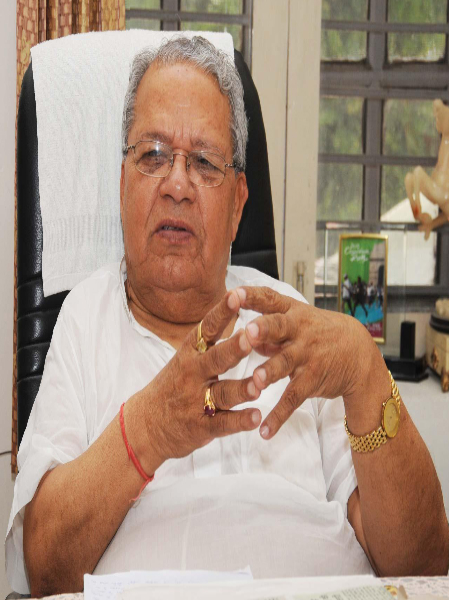
There is a whiff of enthusiasm among the country’s micro, small and medium enterprises (MSMEs). They see a revival in sight as the new government in New Delhi attempts to spur growth. Nearly 3.6 crore small enterprises are looking up to the Narendra Modi government to bail them out of stagnation.
“It is this government’s priority to revive the MSME sector that has collapsed in the past few years. My ministry is doing everything possible to create conducive atmosphere for it to flourish,” stresses MSME Minister Kalraj Mishra.
Mr Mishra’s reassuring words are certainly not mere lip service. Over the past seven months since taking charge, the 73-year-old minister has been following a hectic schedule that can put people half his age to shame.
Mr Mishra has got cracking from day one, meeting associations of small businesses from across the country. He has been hearing out their grievances and picking up their suggestions to alter existing schemes and frame new ones. He is also working in close collaboration with State governments to evolve an effective policy framework for the MSME sector.
Besides, the MSME minister has been pushing plans and programmes to boost the sector. Be it inaugurating a technical school in New Delhi - jointly promoted by the MSME Ministry and Samsung - or launching an online shopping portal of National Small Industries Corporation (NSIC) or a job portal developed by the National Institute for Entrepreneurship and Small Business Development (NIESBUD), Mr Mishra has been ensuring that these small measures go a long way in promoting the vital engines of the economy.
Mr Mishra’s spate of inaugurations and launches is far from any regular photo-op exercise. On the contrary, they are serious attempts of breathing life back into the country’s small enterprises. The MSME Ministry - one of the few ministries to be awarded the ISO 9001:2008 certifi cation - and its agencies - NSIC, NIESBUD, Khadi and Village Industries Commission and Coir Board, among others - are working overtime to revive the critical sector.
Multiple hurdles
The MSME sector may be small in size and scale. Yet it has a lot at stake for the entire economy, contributing
about 8 per cent to the country’s Gross Domestic Product (GDP). Moreover, small enterprises account for around 45 per cent of the country’s manufacturing output and a little over 40 per cent of its total exports.
The crucial sector employs the largest number of people in the country after agriculture, providing direct jobs to over 8 crore people. Besides, it is a cornerstone of the country’s industrial structure as many small ancillary units supply key components to large industrial projects.
But for all its signifi cance, the MSME sector has never really got its due. It has been pampered on paper with a number of schemes but seldom benefi ted from them in reality. The past few years have been terrible for small enterprises, thanks to global economic downturn. Apart from a drastic drop in overseas and domestic orders, they have had to contend with mounting pending payments and high raw material prices.
The biggest of hurdles before the sector continues to be fi nance. Timely access to funds at affordable rates continues to hold it back. Despite a deluge of schemes - disproportionately debt-centric - small businesses find it tough to get adequate funding. “Loan recovery levels of MSMEs are higher and the speed with which they fall back on track are faster. So, one wonders why interest rates for MSME lending should be higher than rates for finance that larger industries get,” asks Dr P M Mathew, the director of the Institute of Small Enterprises and Development (ISED), a Kochi-based think-tank.
A recent study by International Finance Corporation, in partnership with the Japanese government, reveals that MSMEs in India require a whopping Rs 32,50,000 crore in financing.
The study further adds that about 78 per cent of the huge funding is arranged through informal sources or self-fi nancing, pushing up the cost of funds. It points out that only the remaining part is met by banks and other institutions.
Kalraj Mishra, like most of hiscolleagues in the Narendra Modi Cabinet, has been quite busy over the past seven months. Each day of the Union MSME Minister passes off with endless meetings, interactions with delegations and, of course, unending office work, attending to files.
Incidentally, Mr Mishra is 73 years old but with the energy level of a 37-year-old. Beginning his day at 5.30 am, he usually works beyond 11 pm. This is the schedule that he picked up decades ago as a pracharak (fulltime volunteer) of the Rashtriya Swayamsewak Sangh, the ideological front of the Bharatiya Janata Party (BJP) and the Sangh Parivar. Inspired by Jayaprakash Narayan, he actively participated in the anti-Emergency movement of the mid-1970s.
A post-graduate from Kashi Vidyapeeth, Varanasi, Mr Mishra is a prominent fi gure in Uttar Pradesh’s political circles. He has also served as minister for public works, medical education and tourism in the UP government between 1997 and 2000. A three-time Rajya Sabha member, he was elected to the Lok Sabha from Deoria in UP last May.
The Khadi-clad, soft-spoken minister is a strict disciplinarian and able administrator. In a short span of time, he has been successful in reviving the hopes of small businesses across the country with deft policies and swift action. In a wide-ranging interview with India Business Journal, the MSME minister shares his plans and programmes to bring vibrancy back to the critical growth engines of the economy.
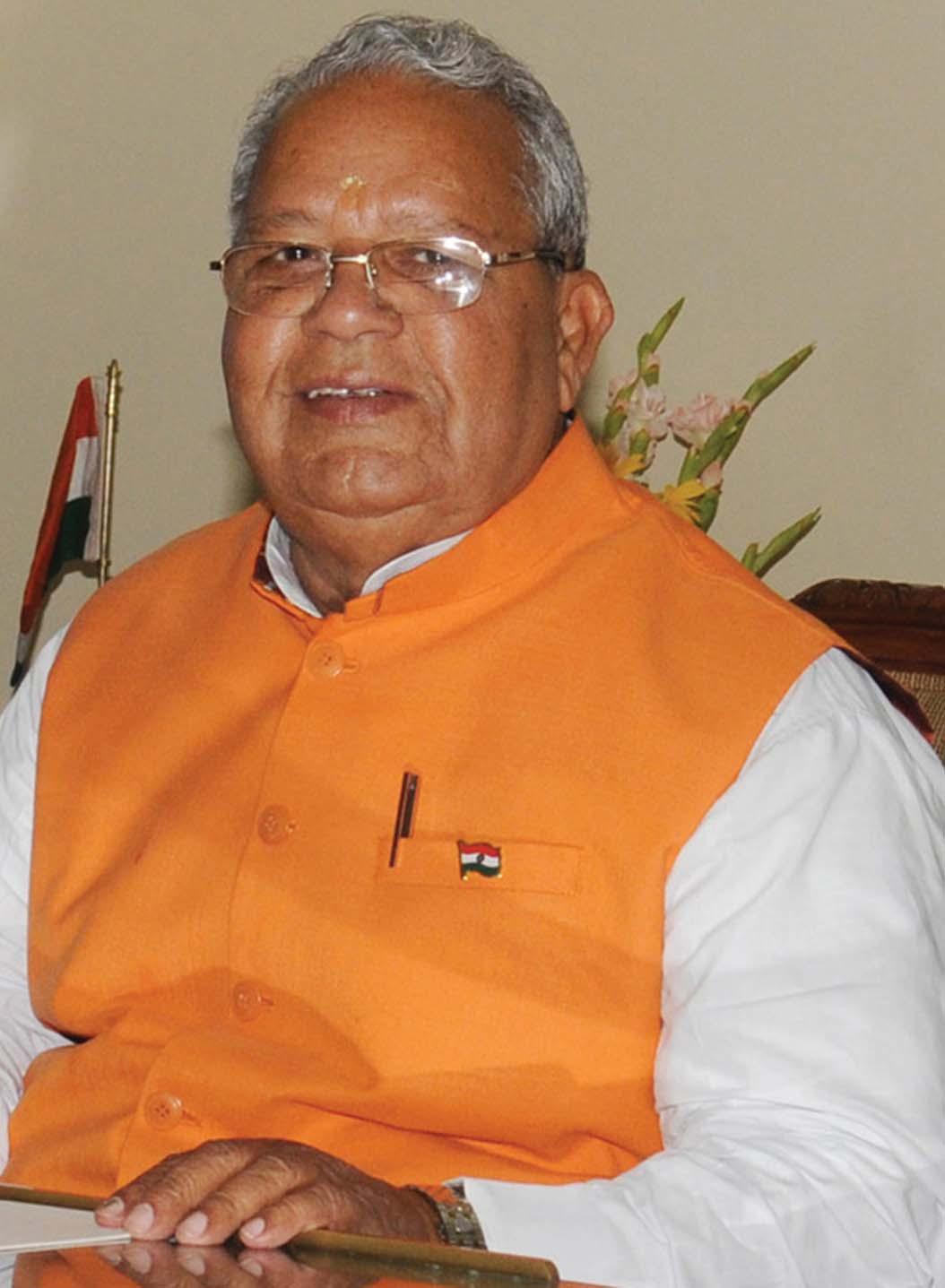
What are your ministry’s top priorities in reviving the high-potential MSME sector?
As a first step, we want to redefine MSMEs and make them relevant to the changing times. The government is in the process of amending the MSME Development Act, 2006, to bring about the necessary changes. Besides, the new draft MSME Policy, which is at the advanced stage of fi nalisation, will facilitate in developing small enterprises to their fullest potential. My ministry is doing everything possible to provide these enterprises with raw material, marketing and capital support, simplify procedures for various clearances and create conducive atmosphere for them to flourish.
Would you specify some measures being taken in this direction?
The ministry is working on a simple format to streamline the process of fi ling entrepreneurs’ memorandum through an online system. This will prove to be an important step for setting up new enterprises in the country. My ministry is also interacting with other ministries to fix a deadline for procurement of NoCs (no-objection certifi cates) from ministries concerned to ensure that small entrepreneurs do not face any diffi culties. There is little progress on the public procurement policy for MSMEs, which became effective from April 2012. From April 2015, it will be mandatory for PSUs, ministries and other government departments to procure 20 per cent of their requirement of products and services from MSMEs. We are asking States to create land pools by listing out all unused land available with them. More than 40,000 industrial plots and another 20,000 plots in SEZs (special economic zones) are lying vacant across the country. We can set up millions of new enterprises on these vacant plots by formulating an appropriate policy.
What efforts are on in developing skilled manpower for small enterprises?
The government is committed to creating industry-responsive manpower by giving thrust on employable skills and vocational training in partnership with industry. Various field establishments under the ministry have trained more than 6,00,000 youths last year. We will be setting up an incubation centre in every district for skill development of both labourers and entrepreneurs in rural areas. With skilled labour, we will strengthen the Make In India campaign.
Would you update us on the developments related to redefining the capital ceiling of MSMEs?
The ceiling was fi xed eight years ago under the MSME Development Act, 2006. A higher capital ceiling will bring many more companies with higher investment in plant and machinery within the sector’s fold and allow them to benefi t from schemes and incentives tailored for small enterprises. The draft amendment proposes to hike investment limits in plant and machinery to Rs 50 lakh from Rs 25 lakh for micro units, up to Rs 10 crore against the existing Rs 5 crore for small units and up to Rs 30 crore against Rs 10 crore for medium enterprises.
Are there any plans to revive over 2 lakh small enterprises that have shut shop across the country in the past few years?
The government is making efforts to revive units that have become sick. We will sit with the units and figure out those that are viable and help them revive. We are also working on developing a bankruptcy framework to offer easier exit routes to sick companies.
Despite a flood of MSME-centric schemes, the sector still finds it difficult to access timely, low-cost funds.
My ministry is lobbying hard with public sector banks to extend loans to MSMEs at the base rate so that this segment is able to access capital at much cheaper rates.
We are also ensuring that banks do not insist on collaterals when extending loans to small businesses under the Credit Guarantee Fund Scheme. Every year, collateral-free loans worth over Rs 20,000 crore are provided to about 14,000 entrepreneurs. My ministry is urging State governments to set up a mechanism for funding new entrepreneurs at the State level. I am happy that Kerala and Chhattisgarh have taken a lead in this direction.
How is the government addressing challenges that MSMEs face in accessing technology and marketing network?
Apart from the government’s stress on skilling the workforce, the private sector should also open technical institutions, tie up with enterprises and train youth in large numbers with a guarantee to provide jobs. The PPP route can be explored to equip small enterprises with world-class technology. In fact, my ministry has a tie-up with Samsung to setup ten technical schools across the country to train approximately 10,000 youths a year. Last year, we set up one such technical school in New Delhi.
Many of our agencies have taken measures to facilitate MSMEs in marketing their products. NSIC’s online shopping portal is a boon for small enterprises to market their products and services to every corner of the country. Another similar move is the ministry’s Virtual Cluster, a dedicated, web-based portal, that enables small businesses located anywhere in the country to register online instantly, get linked with each other and leverage each others’ expertise.
Absence of an ecosystem to nurture and promote small enterprises is equally responsible for hampering the sector’s growth prospects. Innumerable licences and clearances to start operations and tough labour laws often frustrate seasoned corporate houses with deep pockets. With limited resources, very few small enterprises can overcome labyrinthine bureaucratic hurdles.
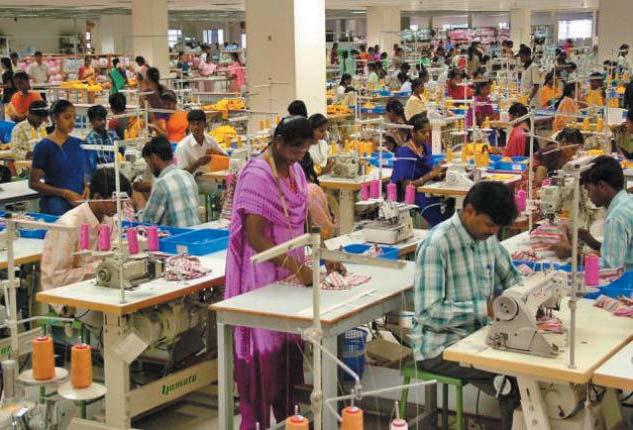
The ‘missing middle’ continues to undermine the sector. The catchy term refers to 95 per cent of MSMEs concentrated in the micro segment, leaving small and medium segments with a minuscule minority share. This missing middle has resulted in Indian MSMEs remaining stunted and not growing in size and scale to reap the gains of globalisation.
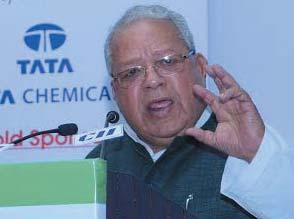
A simple technological tool, like a website, can change the fortune of an enterprise. With e-commerce emerging as a big game-changer, there is a new opportunity for MSMEs to utilise digital platforms and reach out to the remotest corners of the world at a minimal cost. But unfortunately, very few small enterprises in the country are able to take advantage of the cyber world. A 2013 Google-FICCI survey reveals that only 5 per cent of Indian SMEs have a website.
However, the situation could be changing for the better. Last June, Flipkart signed an agreement with FISME to facilitate MSMEs to tap customers through the e-commerce platform. The country’s largest ecommerce company is planning to rope in 50,000 small businesses in the next two years.
Rival e-commerce players Snapdeal, Amazon and others too are tapping the country’s richly diverse MSMEs.
Right moves
Incidentally, a positive turn of events for small enterprises is not limited to the cyber world alone. Their real world too is changing for the better. Over the years, the sector’s fi nancial needs are being addressed to some extent. Banks’ specially-dedicated SME divisions and Small Industries Development Bank of India’s (SIDBI) varied schemes are doing their bit to fund small businesses.
Besides, SIDBI’s many subsidiaries, such as SME Rating Agency of India (SMERA) and Credit Guarantee
Fund Trust for Micro and Small Enterprises (CGTMSE) are aiding small businesses to access loans at lower rates. SIDBI Venture Capital has taken the lead in offering venture capital to MSMEs. Many venture capital funds of the SIDBI subsidiary are a welcome departure for the sector, flooded with debt-centric instruments. Besides, SME bourses of BSE and NSE are also providing them a platform to raise funds.
“The government should acquire land and give it to entre-preneurs at econom-ical rates with plug-and-play facilities, as in China, so that operations can start from day one.”
ANIL BHARDWAJ
Secretary General, FISME

Meanwhile, the biggest positive turn for the sector appears to be the receptive Central government. For the first time perhaps, the government is looking at the sector holistically. It is pursuing a multi-pronged trategy by simultaneously tackling MSMEs’ problems related to finance, skill, technology and marketing, among others, and building an ecosystem to make life easier for them.
“The government, with a vision to revive the ‘missing middle’, has imparted the initial policy impetus to empower MSMEs to participate in India’s growth story,” notes Rana Kapoor, the president of the Associated Chambers of Commerce and Industry of India (ASSOCHAM) and president and MD of Yes Bank.
The government’s resolve to scale up small enterprises is reflected in its last July Budget, which proposed to set up a Rs 10,000-crore venture capital fund for MSMEs. The fund is aimed at attracting private capital and providing equity, quasi-equity, soft loans and other risk capital for startup companies.
The MSME Ministry is closely working with the Finance Ministry to operationalise the venture capital fund. “The methodology of investment has been left open. It can be angel fund, venture capital, self-loan or ny other risk capital. The impact of this, however, will be huge as it will lead to a total investment of more than Rs 75,000 crore,” stresses Mr Mishra.
The focus has now shifted to skilling the country’s workforce to provide small enterprises with skilled labour. Many large industries and corporations have responded positively to the government’s call to skill the labour force through the public-private partnership (PPP) route. “Skill training should not be an afterthought. There is a need to create uniform training standards which are benchmarked to world-class standards,” stresses Ajay Shriram, the president of the Confederation of Indian Industry (CII) and chairman of DCM Shriram.
The stress is also on incubating ideas and promoting an innovationbased, entrepreneurial culture through a large number of start-ups. The MSME minister is keen on increasing the number of incubation centres from 70 to 500 in partnership with industries and industrial associations and opening 15 technology centres in some of the incubation centres.
Meanwhile, the sector’s long-pending demand for reviewing the MSME defi nition for higher capital ceiling will soon be materialising. The crucial issue is a part of the MSME Ministry’s background note to amend the MSME Development Act, 2006. “The current classification, based on investment, needs to be changed and based on the criteriaof turnover and employment generation. A separate set of compliance parameters and a favourable tax structure for MSMEs can help the sector,” notes Prabodh Thakker, the president of the Indian Merchants’ Chamber (IMC).
The note also proposes to provide time-bound revival and exit options for small businesses. The ministry is also fi nalising the new MSME policy that will redesign existing schemes and simplify norms and procedures for setting up a venture and seeking various clearances.
The government is also taking baby steps towards untangling a maze of labour laws, a political hot potato. The recent amendments to two of the labour laws put an end to the anachronistic Inspector Raj and simplify compliance norms for employers of small enterprises. But there is a long way to go on the labour reform front which will require the support of States and opposition parties.
Meanwhile, the domestic economy is gradually emerging out of the shadows of economic slump. Low infl ation, higher economic growth, recordlow crude oil prices and a possible rate cut by the Reserve Bank of India bode well for MSMEs. After a long time, small enterprises find themselves at the centrestage of the economy. As the government moves closer to getting the MSME ecosystem right, the vital engines of growth cannot be faulted for their new-found enthusiasm.
BUDDING MANAGERS
JANUARY 2015 ISSUE
In an emerging trend, expatriates (expats) are increasingly occupying top management positions in Indian companies as the companies expand their global presence further.While hiring of expatriates across industries has been growing at a steady pace over the last two decades, this trend has particularly accelerated considerably in the last few years. Human resource (HR) experts estimate that at least 15 to 20 per cent of Indian companies have been hiring expats for executive-level positions, including for the roles of CEO and board members. Tata SIA Airlines CEO Phee Teik Yeoh, Reliance Digital CEO Brian Bade, Go Airlines CEO Giorgio De Roni, Maruti Suzuki India MD and CEO Kenichi Ayukawa and Vodafone India MD Marten Pieters are among some of the top-level expat chiefs in India. Experts note that about 70 per cent of expats are hired at senior CEO levels, while the rest are taken inat middle or junior management position.
Magnetic India
According to HR services firm Randstad India, 30,000 to 35,000 expats are working in India at present and this number is set to increase by around 10 to 15 per cent a year, going forward, as India returns to a path of economic growth. “With Indian companies also increasing their presence globally, we are witnessing signifi cant expat hires with the technical and functional knowledge to compete with global competitors,” notes Randstad India CEO Moorthy K Uppaluri.
Apart from the positive outlook of the economy, the ease in travelling, better connectivity and better lifestyle at much lower costs have greatly facilitated this trend, opines MrUppaluri, adding that the trend hasaccelerated in the last five years.
Executive search firm Mancer Consulting CEO Satya D Sinha opines that “The concept of expat hiring at toplevel management has always been prevalent across the globe. With increasing globalisation, the trend is even more visible in the last five to six years”.
He feels that there has been a major upsurge in hiring activities for expatriates in the last five to six months on account of a change in government and the rising Indian economy. Interestingly, Mr Sinha points out that a lot of the expats have begun their own start-ups in India.
Unison International MD Udit Mittal opines that the most common reason for hiring expats is a lack of skill availability in the domestic mar-ket. “Another common reason that firms use expats is for their superior communication skills, and because they have an understanding of new markets and how business is done in their home countries,” notes
Mr Mittal. Major players looking to hire expats are in the automobile, retail, ecommerce, aviation, engineering and manufacturing sectors. “With a lot of mergers and acquisitions happening and India being a fast-paced economy, a lot of Indian business houses are taking up joint ventures with international brands,” adds Mr Mittal.
“Expats come in, and unlike most of the Indian top management, they are hands on. They don’t mind getting their hands dirty,” Mr Mittal points out. “Vast and diverse experience, coupled with excellent communication skills and business knowhow from their country of origin, tends to impact a company’s revenue in a positive way. Many companies, which were not doing good enough, have made a comeback in style just by restructuring the organisation or bringing new top management,” he notes. MyHiringClub.com CEO Rajesh Kumar points out that most expat hiring is taking place at the top management level. “One major reason for hiring expats in top management positions is their skills and exposure to international market,” he adds.
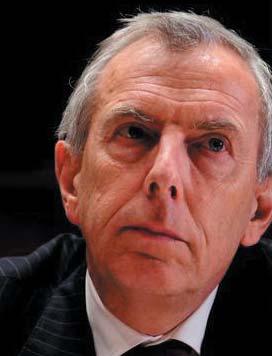
According to talent management firm DDI’s Amogh Deshmukh, “While they (expats) may be new to the Indian way of working and culture, they are still quite adept at learning and accepting the new work culture and environment.” Mr Deshmukh further notes that over the years, there has been a mixed trend with multinational organisations having a few expatriates at the CEO level and a few deciding to have an Indian CEO from the time they entered India. “Another trend that we have seen is expatriates are mainly invited for their technical expertise in many organisations,” he adds.
Global village
According to experts, the number of experts will continue to grow as India has made it to the list of top-10
favourite expat destinations. Expats bring in a lot of perspective to the company. With their global exposure, they can align the Indian units with global units quite effectively. At the same time, they can market the abilities of India operations well, help companies get better work and create a win-win situation for all. The main factors facilitating a rise in hiring of expatriates can also be attributed to shrinking job opportunities in contracting economies in Europe and the United States where citizens of these countries have begun looking at India as an important destination to land up for a better job.
"With Indian companies increasing their presence globally, we are witnessing signifi cant expat hires with technical and functional knowledge to compete with global competitors."
MOORTHY K UPPALURI
CEO, Randstad India

India Calling
- About 35,000 expats working in India
- Their number set to increase by around 15% annually
- At least 20% Indian companies hiring expats for executive-level positions
- Around 70% expats hired at senior CEO levels
- Expats attracted by upbeat economy, better connectivity and lifestyle
- Lack of skill availability in domestic market fuelling the trend
- Shrinking job opportunities in developed economies luring expats to India
"The concept of expat hiring at toplevel management has always been prevalent across the globe. With increasing globalisation, the trend is even more visible in the last five to six years."
SATYA D SINHA
CEO, Mancer Consulting
Further, for Indian employers, expats have been in demand for their expertise in various fields, such as infrastructure and technology, as such skills have not been easily available in India as they are in developed countries. With businesses getting more complex and competitive, employers need experienced hands from outside.
"A common reason that firms use expats is for their superior communication skills, and because they have an understanding of new markets and how business is done in their home countries."
UDIT MITTAL
MD, Unison International
A very good example is the metro rail project in the infrastructure segment and 4G projects in the telecom sector. A lot of projects are time-sensitive, which attracts someone who can complete in less time.
Expats having been exposed to similar projects abroad can manage delivery within defi ned timelines, point out experts. The world has turned into a big global village over the past two decades.
Just as foreign chiefs are steering some top Indian companies, many blue-chip global giants are being driven by head honchos of Indian origin.
Businesses know no boundaries, and over the past two decades, the pace of globalisation has facilitated the shift of talent across borders.
BUDDING MANAGERS
JANUARY 2015 ISSUE

Where do I even begin when talking about sexual harassment in workplace? Should I begin with the popular ‘The fall of the high priest’ case of the giant IT firm! Or a few other sensational scandals that hit the headlines and jolted the country in late 2012 and early 2013. Or a numerous unnoticed cases of a threatening male boss over a female subordinate or the lewd jokes from a male to a female colleague or the suggestive gesture in a room full of people or when alone...this endless list of harassment continues from the day women stepped into the work arena. In the initial days of entering the corporate world, it might pose to be a traumatic and a disturbing experience for young women. There were even several cases in India reported of suicides, mental depressions, physical and psychological traumas and in a few cases quitting the dream job, forgoing the aspirations just because of the reason that the young woman was unable to tackle the predators!
The last 10 years to be precise have seen more women entering the work force. As their numbers heave high, their vulnerability to harassment also has risen beyond what we could imagine! What we all hear, read and see through the media are criminal acts of gang rape, assault and molestation, while the so called ‘less dangerous’ forms of harassment like verbal abuse, lewd jokes or text messages, physical touching, or unpleasant comments on the appearance of a woman are given free sway because they do not qualify as criminal acts of severity or danger.
I was questioning myself each time when I get to hear such cases from working women, about the traumatic experiences they are put up with, in their workplace because of the ‘Bad and the Ugly’ harassment harnessed on her from her boss or who-so-ever the predator may be, out of his sheer authority and power. At times, am mystified when such experiences are shared by women who hold high ranks and are in profile holding the responsibility of corporate ethics in the organization and they themselves are subjugated to such harassment!
Even such women tend to shy away from bringing the issue of the ‘bad and the ugly’ that is inflicted on them.
All these have in fact disturbed me to bring out few thoughts about such happenings and to deal with it right here right now with a strong foot in support of all working women who are/were/would be afflicted by the bad and the ugly! Enough is Enough is my better say on this.
Recognize....
Understand that workplace sexual harassment is not confined to an offi ce environment. Any misconduct outside the premise while on a work-related outing such as corporate get-togethers, business meets, corporate event, or a business trip can constitute to sexual harassment. Also you can be sure that the harassers need not necessarily be colleagues at work; they can be customers or vendors or anyone associated with your business or work.
Understand the harassment..
Quid pro quo harassment is the sexual blackmail demanding sexual favors, forcing the recipient to choose between agreeing to lewd requests or threaten with the risk of losing out on salary, promotions or even the job itself. This is an example of power play at work and an abuse of authority.
Hostile Sexual Environment is created when the behavior of lewd sexual actions, manners or pictures exhibited and the same environment is being tolerated and supported by management or co-workers.
Effects...
I have seen many of those inflicted by sexual harassment feel daunted, embarrassed, angry and at times disgraced, and find it difficult to continue working under such circumstances unable to face or tackle the situation and they take a call on quitting their job or to feel humiliated and still continue working there.
Do you think these women can help themselves?
YES! A Bold YES is the answer. If you are victimized of such harassment, immediately let the harasser know, decisively and evidently, that his actions are undesirable and objectionable.
Thumbs UP..
1. Say NO effectively and emphatically. It is more important to be firm than polite.
2. Collect evidence – the complete details of the incident, who were present, the date and time and so on. Keep any lewd email or text messages from the harasser as evidence.
3. Alert or inform the harassment to someone whom you trust at the workplace.
4. Be sure to document your work and communications pertaining to your work in case the harasser questions your work or performance to justify their behavior.
5. Discuss in confi dence with your HR function or the concerned or, at least, another superior, and try to resolve the situation.
6. While working on the grievance procedures, provide names of people within the company who might act as your witnesses.
7. Be prepared that not all your colleagues are willing to affirm for you because of fear.
Thumbs DOWN..
1. Don’t be unclear about what unpleasantness you encounter.
2. Don’t use the words “please don’t”. Harassers will only hear the “please”.
3. Don’t be timid.
4. Be firm to say NO
5. Don’t ignore it. It is unlikely to stop if this is all you do.

Not a MYTH:
Sexual Harassment is common in the workplace.
Sexual Harassment occurs in the boardroom
Awareness of mechanisms for redress within the Workplace is low
Industries with high levels of sexual harassment incidents - Business, Banking and fi nance, Sales and marketing, Hospitality, Civil Service, Education, lecturing
What you must know about the recent sexual harassment law:
The Sexual Harassment of Women at Workplace (Prevention, Prohibition and Redressal) Act, 2013 (amended) is an act “to provide protection against sexual harassment of women at workplace and for the prevention and redressal of complaints of sexual harassment.”
A snapshot of Vishaka Guidelines (now Sexual Harassment of Women at Workplace Act), 2013 amendment..
Only Women - The law applies to women harassed in the workplace including women working as domestic workers, daily wagers, temporary or permanent, full-time or part-time, as well as volunteers. The women may or may not be employed and can be of any age. The law is only applicable to women only.
Act - Sexual harassment includes any one or more of the following unwelcome acts or behavior: Physical contact or advances, demand or request for sexual favors, making sexually colored remarks, showing pornography, any other unwelcome physical, verbal or non-verbal conduct of sexual nature, intimidating/hostile/offensive work environment Humiliating treatment likely to affect her health and safety.
Out of premise concerns - The act of harassment can occur in the workplace and also if a woman is harassed while visiting a place arising out of or during the course of employment including transportation provided by the office, a complaint can be filed under this Act.
Redress committee - The Act requires all workplaces to set up Internal Complaints Committees to address the issue of sexual harassment.
Filing a complaint - An aggrieved woman can file a complaint within 3 months of the incident (or later if allowed by the committee).

Settlement - The Act provides the option of a settlement between the aggrieved woman and the responded through conciliation but only on the request of the woman. However, money compensation cannot be a basis for the settlement.
Inquiry - The inquiry has to be completed within 90 days.
False complaint - In case of malicious complaints or false evidence, the Committee may take action against the woman/ person.
Identity - The identity of the aggrieved woman, respondent, witnesses as well as other details of the complaint cannot be published or disclosed to the public/media.
Awareness - The Act also hopes to prevent such incidents by placing a duty on employers to hold regular workshops/awareness programs as well as, display the consequences of harassment in the workplace. Every employer has a duty to provide a safe working environment to all employees.
The Criminal Law Amendment Act has introduced section 354A which enlists the Acts which constitute the offence of sexual harassment and further prescribe penalty/punishment for such acts.
“The number of complaints of sexual harassment of women at work places registered with National Commission of Women (NCW) during the last two years and current year shows an increasing trend” Source National Commission for Women (NCW) Dec, 2014.
I have known a lot of sexual harassment cases that are not reported or that are being ignored and sidelined quoting reasons. What shocked me in few cases are the complainant herself withdrawing or hesitating to proceed with the filing!
What do we do about this?
Let all you men consider your female colleague as one who is being a part of the workplace elements not as an object but as a human asset just as you are! It is an appeal to treat your women colleagues with utmost respect for their purpose of being there as your peer to engage in a job and to shoulder many responsibilities as you do. And not to forget that the respect that you show to your female colleagues is the respect that you get for your own self.
The Act also hopes to prevent such incidents by placing a duty on employers to hold regular workshops/ awareness programs as well as, display the consequences of harassment in the workplace. Every employer has a duty to provide a safe working environment to all employees.
And, for women, all I say is put your foot strong without fear when it comes to protecting your pride and we are not here to quit for someone else`s flaw. We are here to win over the odds. Cmon...afterall women are born with a brave heart when it comes to times of trials!
Be Safe in workplace. It’s your right to recognize, report and retort to the bad and the ugly. Act in time!
BUDDING MANAGERS
JANUARY 2015 ISSUE

Budget 2014 gave taxpayers plenty to smile about. For instance, the hike in deduction limit under Section 80C meant that those who saved more could reduce their tax by up to Rs 15,000. While a higher limit can clearly be a boon for taxpayers, it may not be of much use if you don’t know which tax-saving option suits you best. If you too are confused by the wide range of options under Section 80C, our cover story can help you. We have considered nine of the most common tax-saving instruments . Budget 2015 is much awaited and clearly holds the key for this year’s investments !
Are you also confused? Before you make a choice, go through our cover story to know which is the best option for you. We have ranked 10 of the most common investments under Section 80C on five basic parameters: returns, safety, flexibility, liquidity and taxability. Every investment has its pros and cons.
high PPF may not have a very high return, but its tax-free status, flexibility of investment and liquidity by way of loans and withdrawals, gives it the crown in our beauty pageant. Equity-linked saving schemes come in second because of their high returns, flexibility, liquidity and tax-free status. However, traditional insurance policies, an all-time favorite of Indian taxpayers, manage the ninth place because of the low returns they offer and their rigidity.
Not unsurprisingly, the equity linked saving schemes (ELSS) or tax planning mutual funds hold the pole position this year, followed by Ulips. The PPF, which was ranked number one last year, has slipped to the third position, not because of any change in its features, but because products such as ELSS and Ulips hold greater promise in the current market conditions.
Not much has changed for traditional insurance policies as well as pension plans from insurance companies. They continue...
Some readers might be surprised that the much reviled Ulips are in the third place. The Ulip remains a mystery and its returns are seldom tracked.
We checked Morningstar›s data on Ulips and found that the returns have not been very good in the past 1-5 years. Even so, it can be a useful instrument for the smart investor who shifts his money between equity and debt without incurring any tax.
We have tried to separate the chaff from the grain by assigning a star rating to the various tax- saving options. Whether you are a novice or a seasoned investor, you will find it useful. It will help you cut through the clutter and choose the investment option that best suits your fi nancial situation.
LSS funds are the showstopper this year, scoring 28 out of 30 points. Being equity schemes, they are low on safety, but score full points on all other parameters.
The returns are high, the income is tax-free, the investor is free to alter the time and amount of investment, the lock-in period of three years is the shortest among tax-saving investments and the cost is only 2-2.5% a year. The liquidity is even higher if you opt for the dividend option, and cost is even lower if you go for. the dividend option, and cost is even lower if you go for the direct plans of these funds.
Don't look at ELSS funds as one broad category. Within these, there are schemes with a large-cap orientation, making them more stable than others. Some have a midcap skew, which can be riskier than large cap funds but also have greater potential. The funds that have lined their portfolios with small- and mid-cap stocks will be riskier, but can outperform by miles if the small-caps turn out to be multi baggers. The Reliance Tax Saver fund has almost 70% of its portfolio in small and mid-cap stocks. .. will be riskier, but can outperform by miles if the small-caps turn out to be multi baggers. The Reliance Tax Saver fund has almost 70% of its portfolio in small and mid-cap stocks. It has outperformed the category in the past three years, churning out 41% returns when the category average is 27.7%.
In view of the all pervasive budgets, ever changing golden investment strategies and renewed policies Bm advises its readers to plan out their yearly investments in the most positives ways by duly considering tax saving-instruments as well !
BUDDING MANAGERS
JANUARY 2015 ISSUE
Now, SBI index to forecast state of economy
State Bank of India (SBI) will use its loan book to give indicators on the domestic manufacturing activity from the new year. The country’s largest lender will be releasing the SBI Composite Index, which will have both monthly and yearly indices.
The short-term report, to be released in the fi rst week of every month, will forecast the state of the economy two months down the line. The annual index will also make year-on-year forward predictions. Similar economic forecasts are published by British lender HSBC with global business survey compiler Markit.
Rs 10,000-crore corpus to fund start-ups
The Department of Electronics and IT plans to set up a Rs 10,000-crore corpus to fund various start-ups,especially electronics and IT start-ups. The department will look to pick up stakes in venture capital (VC) fi rms through an electronics development fund it is planning to set up. Guidelines related to the fund are likely to be in place over the next three months. The investments will be routed through VC fi rms, which will pick up start-ups for investment.
India, Russia eye $30-bn bilateral trade by 2025
India and Russia have targeted to double bilateral trade to $30 billion by 2025 and raise mutual investments to $15 billion by the same time from the current $6 billion. The targets were set during the Indo-Russian summit between Prime Minister Narendra Modi and Russian President Vladimir Putin in New Delhi last month. The two countries have also decided to fasttrack implementation of projects for nuclear power plants, striving to complete construction and commissioning of 10 units in the next two decades.
Plastics industry to grow 50% by FY18
The domestic plastics processing industry is expected to grow by more than 50 per cent to Rs 1.37 lakh crore by 2017-18, according to a paper, coauthored by FICCI and Tata Strategic Management Group. The report notes that the growth of the industry is being driven by higher plastic use in existing applications and in end-use industries. In value terms, the ndustry has grown from Rs 35,000 crore in 2004-05 to Rs 90,000 crore in 2013-14. The report points out that the country’s per capita consumption of plastics was at 9.7 kg.
CAD hits $10 bn in September 2014 quarter
The current account deficit (CAD) - excess of foreign currency outfl ow compared to inflow - almost doubled in the September 2014 quarter to $10.1 billion or 2.1 per cent of the GDP, up from $5.2 billion or 1.2 per cent of the GDP a year earlier. The higher CAD, mainly because of high gold imports, however, is not as alarming as the data in early 2013 as the outlook for commodity prices, especially crude oil, has softened. Value of gold imports during the September 2014 quarter doubled to $7.6 billion from $3.8 billion a year ago.
Eased FDI norms for construction notified
The government has formally notifi ed a reduction in minimum area and capital requirement for foreign investors in construction to attract more funds into the cash-starved sector. The minimum built-up area for FDI in construction projects has been reduced to 20,000 sq m from 50,000 sq m. Minimum capital has also been halved to $5 million from $10 million. Foreign investors can exit projects on its completion or on development of trunk infrastructure. Area and capital conditions will be exempted if companies commit at least 30 per cent of project cost to low-cost housing.

India wins steel import case against US
The World Trade Organization (WTO) has ruled against the US imposing high duty on import of certain Indian steel products. India has hailed the order as a “signifi cant victory” that will help domestic steel manufacturers and exporters. The Appellate Body of the WTO ruled last month that the high duty imposed by the US on the certain Indian steel imports was “inconsistent” with various provisions of the Agreement on Subsidies and Countervailing Measures. The ruling is crucial for the Indian steel industry, and it will help in enhancing India’s steel exports to the US.
Pharmaceutical market to hit $55 bn by 2020
The Indian pharmaceutical market, which is expected to grow to $55 billion by 2020, is likely to create 45,000 jobs next year. According to a McKinsey report, the industry, with tremendous growth opportunities unfolding, has the potential to grow more than twice in the next six years, from a projected market growth of $24 billion by 2015 to $55 billion by 2020. Metro and tier-I markets will make signifi cant contributions to this growth, driven by rapid urbanisation and greater economic development.
Refining capacity to rise to 307 mt by FY17
India’s oil refi ning capacity is projected to grow to 307.366 mt a year by the end of2016-17, according to thePetroleum Ministry. The capacity additions will be led by public sector companies which are expected to add 56.3 mt a year by 2016-17. Public-private joint ventures are expected to add 3 mt a year while the private sector, led by Essar Oil’s projected expansion, is estimated to contribute an additional 33 mt a year. The domestic consumption of petroleum products was 158.12 mt in 2013-14 as against a refining capacity of 215.066 mt.
Meda and Cipla in patent row with Apotex
Swedish drug-maker Meda Pharmaceuticals and Cipla have sued Canadian pharmaceutical company Apotex in the US Federal District Court in Delaware to enforce their patents covering nasal spray Dymista. The law suit is in response to Apotex’s filing with the US Food and Drug Administration (FDA), seeking approvals for its generically similar version of Meda’s Dymista, prior to expiry of Dymista’s patents.
The move triggers an automatic stay, preventing the FDA from approving Apotex’s ANDA (Abbreviated New Drug Application) for 30 months from the receipt of the notice, unless ordered otherwise by a district court.
Top-500 cos’ deleveraging cost Rs 7,00,000 cr
Top-500 Indian companies are burdened with huge debt, and 262 of them will require a minimum of Rs 7,04,300 crore to deleverage and go back to the FY11 borrowing level, notes a recent report of India Ratings & Research. The rating agency adds that 87 of the companies face risk of slipping into the “stressed” category unless they get strong equity infusion. It notes that the highly leveraged companies will take five to eight years to improve their credit parameters moderately even if their operating performance improves in line with what was seen in FY11.
Ranbaxy’s cephalosporin banned in EU
Ranbaxy Laboratories has been barred from exporting antibiotic cephalosporin to Germany from its plant in Dewas, Madhya Pradesh, for not complying with standard manufacturing practices. Following Germany, the European Medicines Agency too has extended the ban on the drug across the European Union (EU). Ranbaxy has clarifi ed that the ban pertains to cephalosporin injectables and that no other formulations wil be affected. The report follows an inspection of the Dewas facility by the German regulator where it found deficiencies related to operation of drug manufacturingrooms.
Adventz restarts takeover battle for MCF
Saroj Poddar’s Adventz Group last month came out with another surprise open offer to shareholders of Mangalore Chemicals and Fertilizers (MCF) to acquire a further 25.9 per cent stake at Rs 91.92 a share. This is about Rs 10 higher than Adventz’ earlier offer. Zuari Agro and MCF promoter Vijay Mallya have been in a fi erce battle with Deepak Fertilisers to have control over the fertiliser company since last year. The latest move from Adventz indicates that Mr Mallya, who stepped down as MCF chairman last month, still wants to remain in control of the company.
JSW to invest Rs 8,000 crore each year
Sajjan Jindal-led JSW Steel has lined up investments worth Rs 8,000 crore every year towards capacity addition. The steel- maker is in the process of building a 5,500- cubic metre blast furnace, for which it has set aside Rs 2,500 crore. This will be the largest blast furnace in the world, larger than the ones in Japan and Korea, and can produce 5 mt of steel. JSW Steel recently set up a Rs 5,000-crore cold-rolling complex in Vijayanagar, Karnataka. The 2.3-mt, coldrolling complex will produce alloy steel for the automobile industry.
CCI nod to Sun-Ranbaxy merger with riders
The Competition Commission of India (CCI) has approved the Sun Pharma-Ranbaxy merger with some caveats. Accordingly, the merged entity will have to divest seven drug formulations, in which its combined market share goes up to 95 per cent, resulting in a monopoly. Acknowledging that the CCI approval was a step ahead, the companies noted that these products constitute less than 1 percent of the combined entity’s revenues in India. The over Rs 25,000-crore merger deal may create the fifth-largest pharmaceutical company in the world and the largest in India.
BASF India plans Rs 380-cr R&D facility
BASF India plans to invest about Rs 380 crore to set up an innovation campus at its existing plant in Navi Mumbai. The research and development (R&D) centre will employ 300 scientists when it becomes fully operational by the end of next year and provide solutions in crop protection and polymer research. The Indian subsidiary of the German chemical company currently has an R&D centre in Chandivli, Mumbai, with 50 scientists and another start-up centre at its plant in Navi Mumbai. BASF India plans to consolidate all its research work at the new facility.
IVRCL to sell Chennaiplant to UAE company
IVRCL is selling its equitystake in Chennai Water Desalination Plant to Utico, a UAE-based company specialising in water treatment and environmental services. The equity component of the Rs 550-crore desalination plant is Rs150 crore. The Hyderabadbased infrastructure company has decided to divest its stake in the project as a part of a strategic business plan to monetise its BOT (build, operate, transfer) and BOOT (build,own, operate, transfer) assets. The sale of the desalination plant is expected to be completed in the first quarter of the next financial year.
Cisco India’s R&D centre unveils 3 products
Cisco recently showcased three networking products conceptualised and designed in India, which, it says, will enable the vision of a digitised India. The three products from the Cisco India Development Center in Bangalore span mobility, cloud and computing technologies. The US networking company has 11,000 engineers at the development centre, of which 8,000 are into product development. A Cisco release adds that the products continue Cisco’s tradition of “reverse innovation”, where engineers in India design products to address requirements of emerging countries but end up developing products for the whole world.
Tata Chemicals bets big on farm, consumer biz
Tata Chemicals is bullish on its farm and consumer businesses and believes that they will be key growth drivers in the years to come. The company, a part of the about Rs 6,25,000-crore Tata Group, caters to about 1 crore farmers, covering about 85 per cent of the country’s arable land with farm inputs such as hybrid seeds and other products through its subsidiary Rallis. The company also leads the branded salt segment with a market share over 65 per cent. The company is intensifying its focus on high-tech products, such as speciality fertilisers and herbicides.
Ceat setting up Rs 400-cr unit in Nagpur
Ceat Tyres is setting up a new plant in Butibori, Nagpur, and will invest Rs 400 crore in the first phase of its three-phase investment. The plant will double the RPG Group company’s annual capacity to 12 lakh tyres in two years. The new plant, spread over 60 acres, will be equipped with highly automated manufacturing machinery chosen from the world market and will make two and three-wheeler tyres.
TReDS set to ease MSMEs’ fund woes
The RBI has released guidelines for setting up Trade Receivables Discounting System (TReDS) for easing liquidity crunch among micro, small and medium enterprises (MSMEs). TReDS is an institutional mechanism to help convert MSMEs’ trade receivables from large corporate bodies and other buyers - including government departments and State-owned companies -into liquid funds through multiple financiers. The central bank has mandated entities financing trade receivables and interested in becoming a part of the proposed TReDS to have a minimum equity of Rs 25 crore, with promoters bringing in at least 90 percent of the equity.
GMR arm buys out Malaysian MRO partner
GMR Hyderabad International Airport last month bought out Malaysia Aerospace Engineering’s 44.61 percent stake in a jointly-owned maintenance repair and overhaul (MRO) facility. With the buyout,MAS GMR Aerospace Engineering Company becomes a wholly-owned subsidiary of GHIAL, a subsidiary of diversified GMR Infrastructure. GMR had in the past indicated that Malaysian Aerospace Engineering had expressed its inability to infuse fresh funds into the loss-making MRO facility.
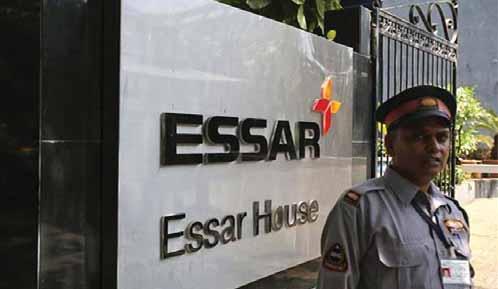
Mahindra First Choice to sell light CVs
Mahindra First Choice Wheels will start selling pre-owned light commercial vehicles (CVs) soon. The pre-owned vehicle seller is adding another 100 outlets next year to go up to 500 dealers. It is also looking at expanding to 1,000 outlets over the next three years. Last year, the company sold around 1.50 lakh pre-owned vehicles through both online and offline modes. Apart from selling pre-owned cars through the brick-and-mortar route, it is also selling through electronic mode,Autobid.
More group health policies offer OPD cover
Group health insurance policies are beginning to cover out-patient department (OPD) expenses incurred by employees. According to a survey by Vantage Consulting, 11 percent of the companies surveyed out of a pool of 129 are offering outpatient treatment under the group health insurance policies. Earlier, under health insurance and group health policies, medical insurance kicked in only when there was a minimum of 24-hour hospitalisation. Insurance companies started covering out-patient treatments only a few years ago through reimbursements.
Nod for factoring companies to diversify biz
Factoring companies can now diversify their business, thanks to a policy change by the RBI. According to the central bank’s relaxed principal business criteria, factoring companies have to ensure that their financial assets in the factoring business constitute at least 50 percent of their total assets against 75 percent earlier and their income derived from factoring business is not less than 50 percent of their gross income against 75 percent earlier.
NMDC eyes 100-mt ore output by 2024-25
National Mineral Development Corporation (NMDC) has drawn up a plan to double its iron ore output to 60 mt by 2018-19 and take it to 100 mt by 2024-25. The Stateowned miner, which is set to close the current financial year with ore production of 31 mt, is scaling up its output by a combination of new mining facilities and expansion of existing infrastructure. As part of its expansion programme, NMDC will open a mine each in the Bailadila sector in Chhattisgarh and in the Bellary-Hospet region of Karnataka in 2015.
Third-party motor provisioning cut to 175%
The IRDA has lowered thirdparty motor provisioning to 175 per cent for 2013-14 from 210 percent in the previous year, giving some relief to general insurance companies. Risks that are declined by insurance companies go to the insurance pool as third-party motor cover is mandatory by law. The IRDA’s move is a part of many changes it has brought to the third-party motor segment since its claims ratio jumped over 200 percent in the past few years. It has dismantled the third-party motor pool and set up a declined risk pool.
PSUs lag behind in investor wealth creation
State-owned companies have missed the bus when it comes to creating wealth for their investors, according to a study by Motilal Oswal. The study notes that value has migrated from PSU to private sector. Wealth creation by PSUs is down to 2 percent against 51 per cent a decade ago. The findings may not come as good news for the government, which is planning to divest its stake in PSUs. The study notes that only major policy reforms and a complete change on how they do business can turn around PSUs’ fortunes.
Govt gets Rs 1,725 cr via SAIL stake sale
The government’s divestment drive got off to a fl ying start last month, with the offerfor-sale (OFS) by State-run Steel Authority of India (SAIL) getting subscribed by over two times. The OFS, which received bids for over 42.93 crore shares against more than 20.65 crore shares on offer, will enable the government to raise Rs 1,725 crore from the offer. Stateowned financial institutions, led by LIC, subscribed to more than half of SAIL’s shares. The government has set a target of raising Rs 43,425 crore through stake sale in various PSUs in this financial year.
GAIL arm to source gas in US from WGL
GAIL Global USA LNG, a subsidiary of State-run gas utility GAIL India, has agreed to source natural gas from WGL Midstream for producing about 2.5 mt of LNG at its Cove Point Terminal in Maryland, USA. GAIL did not disclose the price at which it is sourcingthe gas. The prevailing gas price in the US is in the range of $4-4.5 per mmbtu. The definitive gas sale and purchase agreement has been signed for 20 years and supplies are expected to commence from the 2017-end when the LNG terminal becomes operational.
Rs 1,000-cr prop for 1,000-mw solar plants
The Cabinet Committee on Economic Affairs has given its approval to key proposals in the solar power sector. The proposals include providing government support of Rs 1,000 crore to Central public sector undertakings to set up over 1,000-mw, grid-connected solar photovoltaic power projects. The 1,000 mw of projects will be set up by PSUs under various Central and State schemes from 2015-16 to 2017-18. The Centre has added a condition that the projects will get financial support only if all cells and modules used in the plants are made in India.
Debt-equity conversion formula on cards
The RBI will give banks more leeway to convert debt into equity when they restructure loans. The RBI and the SEBI are trying to work out what the appropriate conversion price should be to convert debt into equity. Last May, the central bank had limited the extent of conversion of debt into equity to about 10 per cent of the shares of the company because of some concerns over prices of conversion. Banks have argued that the 10 per cent cap also limits the upside they could get if the project turned around.
WLA operators get access to multiple banks

Whitelabel ATM (WLA) operators can now accept international cards, such as credit, debit or prepaid cards, and also source cash from multiple banks.
The move follows the RBI’s approval for WLA operators or non-bank ATM operators to accept the cards issued under card payment network schemes. The operators have to ensure that they have established technical connectivity with the respective card network operators either directly or through their sponsor banks. However, in case of cards issued under any other card scheme, the operators have to ensure that the settlement is based on the bilateral arrangement.
Panel for turning postal dept into bank
A government-appointed task force has suggested making the Department of Posts a fullfl edged banking and insurance service provider rather than just providing payment services. The task force,headed by T S RSubramanian, a former Cabinet Secretary, has argued that a Post Bank of India can contribute for financial inclusion of the rural poor. It has pointed out banking and fi nancial services are not available in most of the country’s over six lakh villages. The country has around 1.50 lakh post offices, with about 1.40 lakh of them in rural areas.
BUDDING MANAGERS
JANUARY 2015 ISSUE
